10:24N 75:32W Aruba to Cartagena

Toucan
Conor & Marion Wall
Tue 15 Feb 2011 04:52
|
Aruba to Colombia
Some weeks earlier we had arranged with a friend from Christchurch, Maria
Reid and her friend Neil to spend a couple of weeks with us. At the time the
plan was hatched Marion and I were in Grenada and we had heard about a seminar,
the Pacific Puddle Jump, that was taking place in Panama and thought we might be
able to get there in time for us go to the seminar and meet others that would be
crossing with similar plans to ours. Maria and Neil booked tickets for Panama
City to join us at a location yet to be decided but possibly the San Blas
Islands or somewhere in that area. Unfortunately time was running out and now we
had to make the long sail from Aruba to Cartagena in Colombia. We could of
course have skipped Cartagena and gone straight to Panama but as Cartagena was
on my list of must see places that was never going to happen and there was still
the possibility that we could make the San Blas Islands about the time of their
arrival, if they had to stay in a hotel for a day or two until we arrived then
this was not going to be a problem for them.
 Nice Tuna
We planned the route, tides winds etc. and figured that it would take us
three days exactly. With that in mind we left Aruba at 1200 hours on Friday 4th
February. During the first day and night at sea the winds were steady 20 to 25
knots and we were making good time and to plan. We even caught a tuna that fed
us for a few days.
 Sunset on a rough sea
The next day brought a different wind and a much different sea and by the
time the sun was setting we were down to three reefs in the main and had already
ripped the head sail in a squall that caught us by surprise. This sail was also
reefed down to about a quarter of itâs size to save it from ripping any further.
We really had some big stuff coming at us and it seemed to be determined to get
us. We got pooped twice, once during the day and once at night. We saw winds of
40 knots on a number of occasions and most of the second night and third day the
winds did not drop below 30. We not only ripped the the headsail but I noticed a
small tear in the main which was close to the second reefing point. This could
have happened as we reefed in the strong winds but however it happened it meant
that we could not fly the main un reefed until it would be repaired.
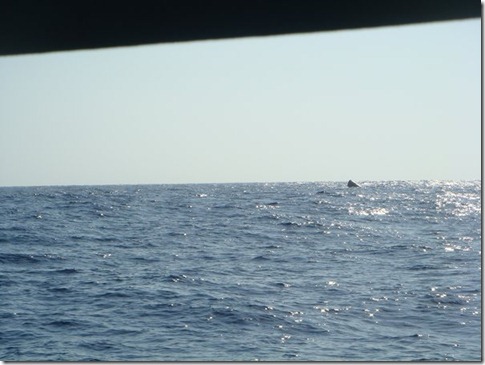 The large drifting and floating object in the distance was either a
container or very large metal buoy. Luckily we did not hit it.
Apparently this is a notorious passage as there are very often very strong
winds off the area of Venezuelan coast from approximately Punta Gallinas to
approximately Cartagena with conflicting and confused seas especially when there
have been strong winds north of the region. At the time of year that we made our
passage it would be very likely to be affected by those winds. For this reason
we had been monitoring the weather forecast to determine our best time for the
crossing but we also needed to cover this distance to be somewhere within
striking distance for Maria and Neil. The guide books give two choices for this
passage. One is to stay close to land and hope to be out of the stronger winds
but the recommended advice seemed to fall on staying well offshore and somewhere
around the one kilometre deep contour. This is the one we chose as we were also
warned of floating logs being washed out to sea during floods and heavy rains. I
have since seen some of these logs which are actually trees and big ones at
that. Not something you want to meet on a dark night in 40 knots of winds and
seas breaking into the cockpit.
 Entering through the submerged breakwater with the new part of
Cartagena in the background. Remember the buoys are wrong way round for us. Red
to starboard, Green to port or as the Americans say, red right returning.
We arrived at our waypoint early on Monday morning and turned left and
headed for Cartagena. Within a very short time the wind died completely and we
ended up motoring the last 20 miles or so into the harbour. We chose to enter
via the eastern entrance which is no more than a gap of about 100 feet or so in
a submerged breakwater that runs across this entire entrance, must be at least a
mile or so across. Only small craft can come into the harbour here as there is
also a depth restriction but it was to save us more than a couple of hours by
not continuing to the western and larger entrance. Cartagena is a massive
harbour and has a very large and efficient container port. There is a marina of
sorts just north of the container port and this is where we stayed during our
time there. Luckily I had warned our guests not to expect European standards but
still I think they were surprised at the state of the place.
 The showers
Cartagena turned out to be everything we had hoped it would be and because
we had to wait for our sails to be repaired and returned to us we ended up
staying there for more than a week. Maria and Neal were able to catch a flight
from Panama to Cartagena which is normally only an hour or two but because their
flight took them to Bogotà first it actually took them an extra couple hours.
Lovely to see them, our first guests since Simon and Henry left and we spent
some extra time exploring the city and stocking up with the fresh food stuff and
beer before departing for the San Blas Islands.
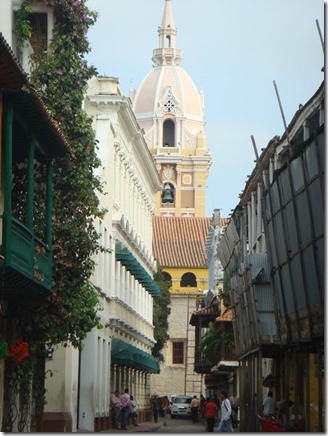 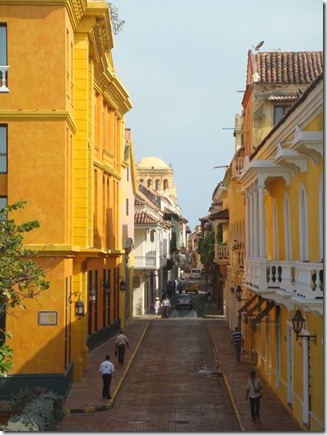  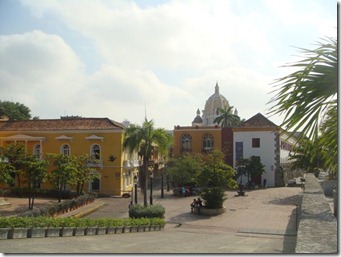 Some Old Town Cartagena photos. A magical place with lots of money
being spent restoring it to itâs former glory.
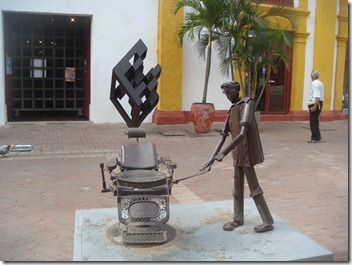 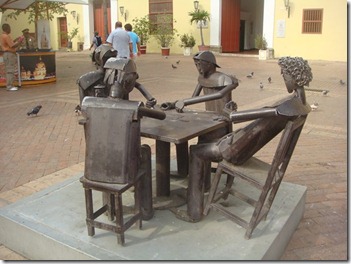 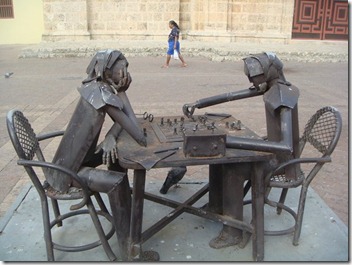 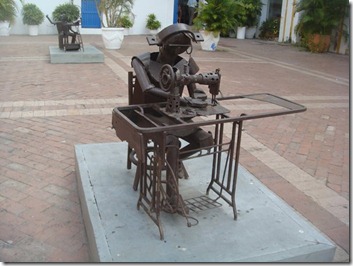 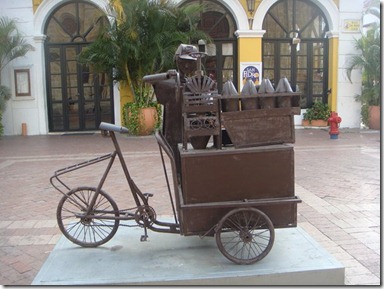  Some of the many statues around the old town.
We left this historical City on Tuesday 15th February with the two new crew
members and travelled the short distance of 25 miles to a group of Islands owned
by Colombia called the Rosaries Islands. We spent the night there before making
the overnight sail to the San Blas. Maria and Neal would spend the next ten days
or so with us.
|